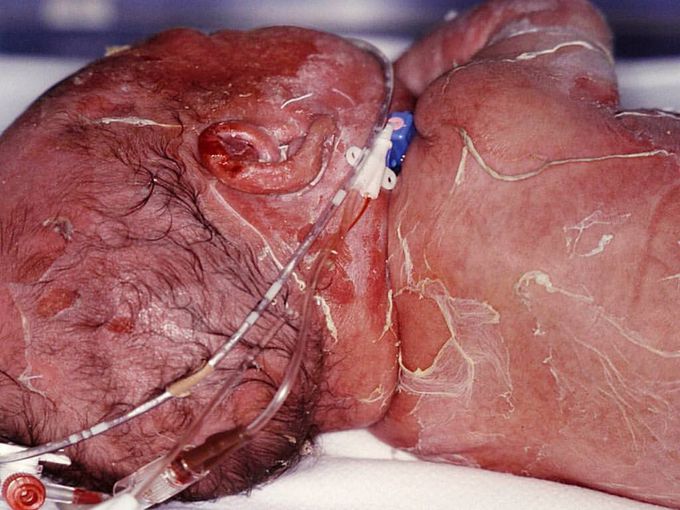


Newborns’ skin is all shedding due to an infection!
Staphylococcal scalded skin syndrome is a blistering skin condition found in infants and young children. The pathogenesis involves strains of staphylococcus aureus that produce exfoliate toxins, which disrupts keratinocyte adhesion in the superficial epidermis, leading to the formation of fragile, flaccid bullae that are no longer intact by the time of presentation. These flaccid blisters appear in areas of mechanical stress, such as flexural areas, buttocks, hands, and feet. Gentle pressure on the skin surface causes detachment or separation and wrinkling of a superficial layer of skin (Nikolsky sign), and epidermal shedding exposes underlying erythematous skin with a scalded appearance. In neonates, the source of infection is often the umbilicus or circumcision site. Treatment consists of supportive wound care for denuded areas and prompt administration of intravenous penicillinase-resistant penicillin, such as nafcillin or oxacillin; treatment with vancomycin should be considered in areas with a high prevalence of community-acquired methicillin-resistant S. aureus or for patients who fail to respond to initial therapy.
Hemodynamic stimuli&nonhemodynamic stimuliEffects of sugar on teeth


